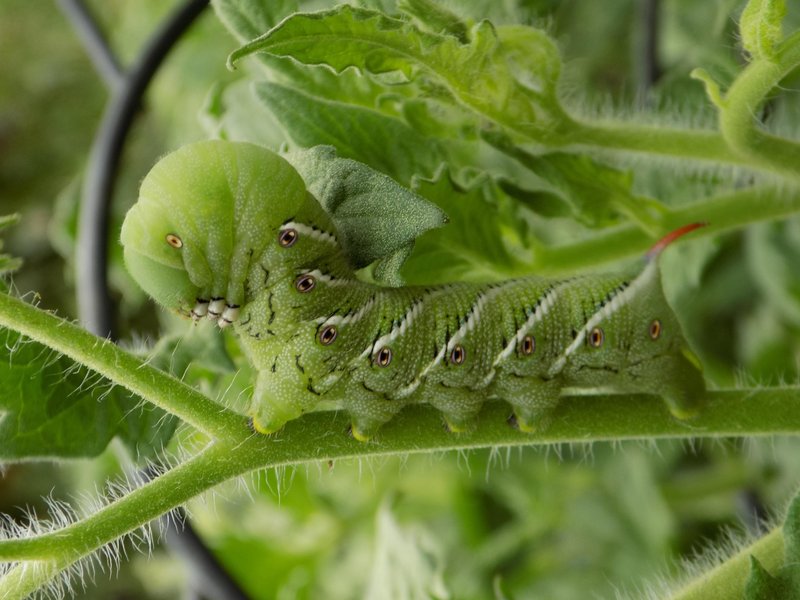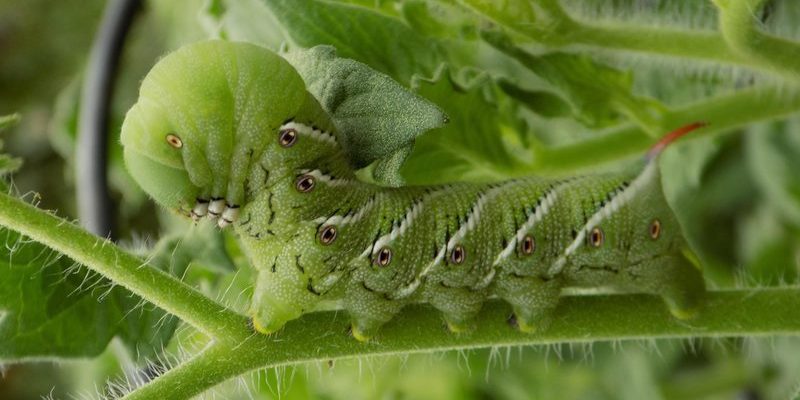
Picture this: a classroom filled with students who are eager to learn but might not quite grasp the vastness of the insect kingdom. By introducing hornworms, instructors can provide a tangible link to theoretical concepts. From their striking green bodies to their distinctive horns, these caterpillars offer a perfect case study on metamorphosis, behavior, and ecological roles. Plus, they’re relatively easy to care for, making them an ideal choice for classroom settings. Let’s explore how teachers can incorporate hornworms effectively into their entomology curriculum.
What Are Hornworms?
Hornworms are the larval stage of the hawk moth, commonly known as the tomato hornworm. These caterpillars can grow up to 4 inches long and are often found munching on tomato plants. When you look at one, you’ll notice its vibrant green color and distinctive horn-like structure on its rear end. It’s hard not to find them fascinating!
A common question is, “Why use hornworms in the classroom?” Well, their lifecycle is a perfect illustration of metamorphosis, which includes stages like egg, larva (the hornworm stage), pupa, and adult moth. By observing these stages, students can visualize and better understand how insects grow and change. It’s like a live science experiment unfolding right before their eyes!
In addition to their educational value, hornworms are relatively easy to rear. They thrive on certain plants, especially tomatoes and peppers, and require minimal care. This makes them a suitable choice for classrooms where resources might be limited. Just a few plants and a little attention can provide a fascinating learning experience.
The Lifecycle of Hornworms
Let’s break down the lifecycle of hornworms. Understanding this process is crucial for students studying entomology. The journey begins when the female moth lays eggs on the underside of leaves, particularly tomato plants. Once the eggs hatch, tiny hornworms emerge and begin feeding on the plant leaves.
1. **Larval Stage:** This is where the fun really begins! As hornworms munch on leaves, they can grow rapidly, sometimes doubling in size in just a few days. This stage is highly visual, allowing students to witness the growth process firsthand. You might even say it’s like watching a time-lapse video in real-time!
2. **Pupal Stage:** After about three weeks of feasting, hornworms will stop eating and look for a safe place to pupate. They often bury themselves in the soil or find shelter among the plants. Here, students can learn about the transformation process from caterpillar to moth, emphasizing the importance of the pupal stage in metamorphosis.
3. **Adult Moth:** Finally, the adult moth emerges from the pupa, completing the cycle. This stage provides opportunities to discuss pollination and the role of moths in ecosystems, making it a rich topic for classroom conversation.
Classroom Activities Using Hornworms
There are countless ways to use hornworms in an entomology class. Here are a few engaging ideas:
- Observation Logs: Have students keep a journal documenting the changes they observe in hornworms over time. This encourages them to engage actively with the material.
- Lifecycle Diagrams: Students can create diagrams or posters illustrating each stage of the hornworm’s lifecycle. This reinforces their understanding and gives them a creative outlet.
- Feeding Experiments: Explore the dietary preferences of hornworms by offering them different types of plants. This hands-on activity can lead to discussions about ecology and nutrition in insects.
Using hornworms in these activities not only makes learning fun but also cultivates a sense of responsibility among students as they care for live specimens.
Understanding Hornworm Behavior
You might be surprised to hear that hornworms have some unique behaviors worth discussing. For instance, they’re mainly nocturnal, which means they do most of their eating at night. This can lead to interesting classroom discussions about how different species adapt to their environments. Why do you think some creatures are more active at night than during the day?
Another fascinating aspect of hornworm behavior is their defense mechanisms. When threatened, they can curl into a ‘C’ shape and even shake their bodies, mimicking a snake. This fascinating behavior can spark conversations about adaptation and survival strategies in the wild. Teaching students about these traits provides real-world examples that deepen their understanding of entomology.
Caring for Hornworms in the Classroom
If you decide to bring hornworms into your classroom, it’s essential to know how to care for them properly. Here’s a quick guide to make sure they thrive:
1. **Habitat Setup:** Provide a container with ventilation. A simple plastic critter keeper works well. Place fresh leaves from tomato or pepper plants inside for them to munch on.
2. **Temperature and Humidity:** Hornworms prefer a warm environment, so keep the container in a well-lit area without direct sunlight. A temperature of around 70–80°F is ideal.
3. **Feeding Routine:** Change their food daily to keep them healthy. Hornworms can eat a lot, so having a steady supply of fresh leaves is crucial.
4. **Observation Care:** Encourage students to observe the hornworms regularly, noting any changes or behaviors they spot. It’s a great way to involve them in the care process!
By following these simple tips, you can create an environment where hornworms thrive while enhancing the learning experience for your students.
Ethical Considerations for Using Hornworms
While hornworms can be an exciting addition to the classroom, it’s essential to talk about the ethical considerations involved. Insects, including hornworms, play vital roles in our ecosystems, and understanding this can foster a sense of responsibility in students.
Discuss with your class why it’s important to treat all living beings with respect. Encourage conversations about the balance of ecosystems and the role of caterpillars in nature. Additionally, ensure students understand that these insects are not just for observation, but they’re part of a larger environmental picture.
At the end of their lifecycle, consider ways to repurpose the hornworms or release them back into nature. This can further reinforce the lesson of interconnectedness in ecosystems.
Integrating hornworms into entomology classes can create a dynamic and engaging learning experience. From their captivating lifecycle to their unique behaviors, hornworms provide real-world examples that make entomology come alive for students. By encouraging hands-on activities and fostering discussions around ethical considerations, educators can deepen students’ understanding of the insect world while instilling a sense of responsibility.
So, if you’re a teacher looking for a way to enhance your curriculum, consider introducing hornworms into your classroom. They could be the key to unlocking a world of curiosity and wonder about the remarkable lives of insects.

